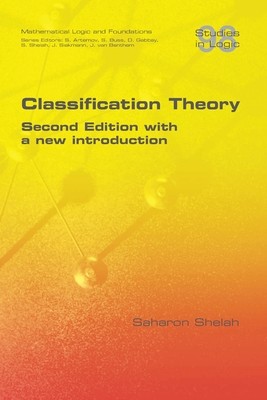
- We will send in 10–14 business days.
- Author: Saharon Shelah
- Publisher: College Publications
- ISBN-10: 1848904231
- ISBN-13: 9781848904231
- Format: 15.6 x 23.4 x 3.8 cm, minkšti viršeliai
- Language: English
- SAVE -10% with code: EXTRA
Classification Theory. Second Edition with a new introduction (e-book) (used book) | bookbook.eu
Reviews
Description
This book is for readers who have learned about first order logic; Gödel's completeness theorem; the Löwenheim-Skolem theorem; the Tarski-Vaught criterion for being elementary sub-model; and who know naive set theory. A graduate course in model theory will be helpful. The thesis of the book is that we can find worthwhile dividing lines among complete first order theories T; mainly countable. That is, properties dividing them in some sense between understandable and complicated ones.
The main test problem is the number of models of T of the infinite cardinal l as a function of l. This culminates in the so-called main gap theorem saying the number is either maximal or quite small in suitable sense. Toward this, other properties are introduced and investigated, such as being stable or being super stable, where can we define dimension and weight, particularly for super stable theories.
EXTRA 10 % discount with code: EXTRA
The promotion ends in 23d.14:23:17
The discount code is valid when purchasing from 10 €. Discounts do not stack.
- Author: Saharon Shelah
- Publisher: College Publications
- ISBN-10: 1848904231
- ISBN-13: 9781848904231
- Format: 15.6 x 23.4 x 3.8 cm, minkšti viršeliai
- Language: English English
This book is for readers who have learned about first order logic; Gödel's completeness theorem; the Löwenheim-Skolem theorem; the Tarski-Vaught criterion for being elementary sub-model; and who know naive set theory. A graduate course in model theory will be helpful. The thesis of the book is that we can find worthwhile dividing lines among complete first order theories T; mainly countable. That is, properties dividing them in some sense between understandable and complicated ones.
The main test problem is the number of models of T of the infinite cardinal l as a function of l. This culminates in the so-called main gap theorem saying the number is either maximal or quite small in suitable sense. Toward this, other properties are introduced and investigated, such as being stable or being super stable, where can we define dimension and weight, particularly for super stable theories.


Reviews